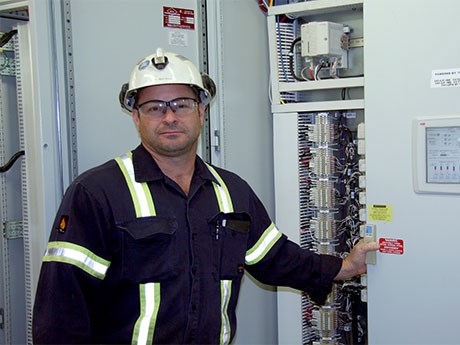Mine of the future
What makes Totten “a mine of the future” has just about everything to do with data and communication. Tying together the headframe, the hoist, the crusher, the mobile production equipment, the ventilation fans, the backfill plant and all the other mine infrastructure is Totten’s distributed control system (DCS).
“Most mines in Sudbury use programmable logic controllers (PLCs),” said Jack McIssac, Totten automation and electrical lead. “PLCs are standalone smart boxes that control individual parts of the process. A crusher station will have a PLC, same with the conveyor belts and the hoist. The distributed control system pulls everything together into one system.
“The advantages of a DCS are that it’s easier to maintain, easier to program and implement the logic in the field, and easier to troubleshoot. It’s also easier to transfer data from one system to another.”
Want to know the performance details of a pump? Easy. Go to a workstation, click on the piece of equipment and drill down for real-time performance values.
Everything comes together in a futuristic control room in the mine’s spacious administration building, where a single operator sits at a long, curved desk with a wall-to-wall array of computer screens and video monitors.
Flow charts and bar graphs provide a visual representation of each process, along with operational metrics, and large overhead monitors display highdefinition video from cameras installed throughout the mine.
The desks, the monitors and the overhead lighting can be raised, lowered or otherwise adjusted with the push of a button.
“In the control room, we can monitor every instrument, every pump, every valve,” said McIssac.
If a piece of equipment deviates from normal operating parameters, an alarm is triggered, alerting the operator and other designated staff, who can then drill down to see the status of the equipment and take appropriate action.
“We would still have the same capability at a central control facility, but DCS makes it easier to provide information to the control room. It’s a very simple process, whereas with PLCs, there’s a lot of work behind the scenes to get to that point,” said McIsaac



